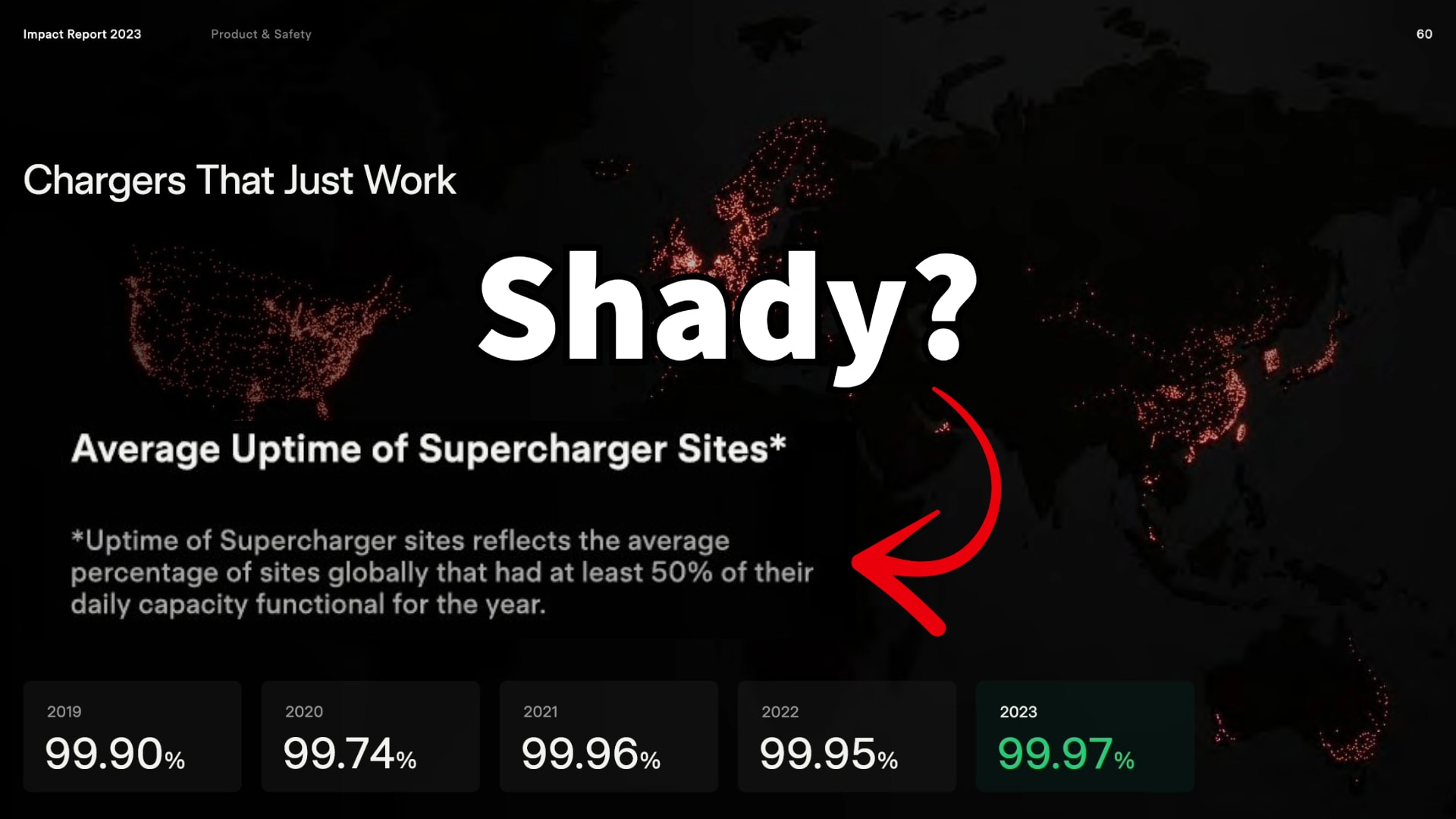Supercharger Network: Tesla’s Crown Jewel or Deceptive Strategy?
Tesla’s Supercharger network has long been considered the crown jewel of the company and a significant reason why people choose Tesla electric vehicles. The network, which started in conjunction with the Model S release in 2012, has grown to become one of the best and largest charging networks globally. The seamless integration with Tesla vehicles provides a strong incentive for consumers to choose Tesla over other electric vehicle brands. The Supercharger network is known for its high reliability, with almost perfect uptime rates, setting it apart from other charging networks in the industry.
2023 Impact Report on Supercharger Network
However, the 2023 Impact Report has revealed that Tesla may have used a deceptive method to assess uptime, causing doubts about its honesty and casting a shadow on the report’s accuracy. While Tesla has always been careful to maintain the high quality and reliability of its chargers, the recent methodology used to assess uptime has raised concerns among consumers and industry observers. The 2023 Impact Report highlights an uptime rate of 99.97% for the Supercharger network, with a low bar set for what constitutes uptime, causing confusion and skepticism.
Questionable Assessment Methodology
The assessment method used by Tesla to calculate uptime for the Supercharger network raises questions about the validity and accuracy of the reported figures. The definition of uptime as “the average percentage of sites globally that had at least 50% of their daily capacity functional for the year” is confusing and misleading. This means that even if a whole Supercharger site is down for 11 hours each day, it would still be counted as 100% uptime. Similarly, if half the stalls at a station are nonfunctional for an entire year, the station would still achieve the same uptime rate.
Comparing Uptime Numbers with Other Companies
The use of this unique uptime metric by Tesla makes it challenging to compare the network’s reliability with that of other companies in the industry. While Tesla’s Superchargers may indeed have the best uptime rates compared to other charging networks globally, the method of calculating and presenting this information does not accurately reflect the network’s performance. The lack of standardized metrics across the industry further complicates the ability to make fair comparisons between different charging networks, making it difficult for consumers to assess the reliability of charging options available to them.
Implications for Consumer Trust and Industry Standards
The deceptive assessment methodology used by Tesla in evaluating the uptime of its Supercharger network has implications for consumer trust and industry standards. While Tesla’s Superchargers may still be considered the gold standard for charging networks, the lack of transparency and clarity in reporting uptime statistics raises concerns about the company’s credibility. Consumers rely on accurate and transparent information to make informed decisions about their choice of electric vehicles and charging infrastructure.
Moving Towards Transparent Reporting
As the electric vehicle industry continues to expand, there is a growing need for standardized metrics and transparent reporting practices to ensure fair comparisons between different charging networks. Companies like Tesla play a crucial role in shaping industry standards and setting benchmarks for reliability and performance. By adopting more transparent reporting practices and using standardized metrics, Tesla can uphold its reputation as a leader in the electric vehicle market and ensure that consumers have access to accurate and reliable information when choosing a charging network for their electric vehicles.
In conclusion, while Tesla’s Supercharger network remains one of the best and most reliable charging networks globally, concerns about the methodology used to assess uptime raise questions about the network’s true performance. Moving forward, it is essential for Tesla and other companies in the industry to adopt more transparent reporting practices and standardized metrics to provide consumers with accurate and reliable information when making decisions about their choice of electric vehicles and charging infrastructure.
Ringkasan
Jaringan Supercharger adalah salah satu keunggulan Tesla dan alasan penting mengapa orang memilih mobil listrik Tesla. Namun, laporan keandalan terbaru mengungkap bahwa Tesla menggunakan metode yang menyesatkan untuk menilai keandalan Supercharger, memunculkan keraguan tentang kejujuran perusahaan tersebut. Tesla mulai memasang stasiun pengisian pertamanya sekitar waktu yang sama dengan penjualan Model S pada tahun 2012. Selama bertahun-tahun, jaringan Supercharger telah menjadi salah satu jaringan pengisian terbaik di dunia.
Apakah Anda pernah mengalami pengalaman menggunakan Supercharger Tesla? Bagaimana pendapat Anda tentang keandalan dan kualitas pengisian Supercharger dibandingkan dengan jaringan pengisian lainnya? Mari berbagi pendapat dan pengalaman Anda di kolom komentar di bawah!
Sumber berita silahkan Cek di sini Source link . jangan lupa baca berita/artikel terkait melalui link di bawah. dan silahkan cek artikel otomotif dari otomotif.autos sekarang di : artikel otomotif
